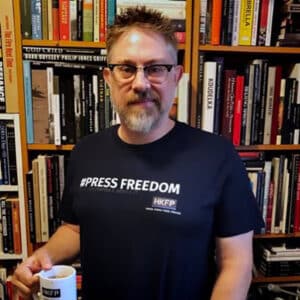"Tape is placed over the mouths of figures adorning a historic building near where protesters affiliated with Black Lives Matter and other groups have congregated in a park outside City Hall in Lower Manhattan on June 30, 2020, in New York City." © S...



